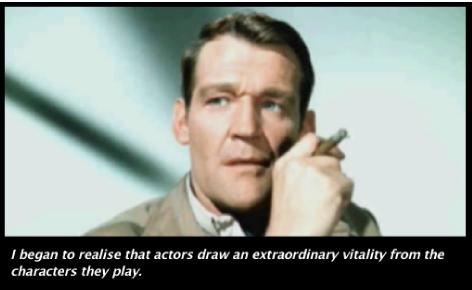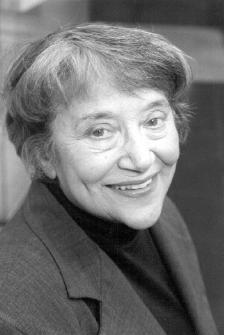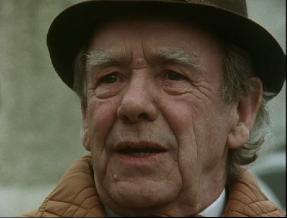![]()

The first full length play I directed for Television was Life and Soul, starring Patrick Allen, Isabel Dean and Peter McEnery. During final rehearsals Patrick became severely ill with the recurrence of a tropical disease that produced a high fever and rendered him so weak he could hardly stand. At that late stage there seemed to be nothing for it other than to cancel the shoot and hope to remount it at a later date. However, Patrick earnestly set out to convince me that he could get through it if I just arranged for a camp bed to be placed just off the set so that he could rest between takes. With no viable alternative I agreed to give it a go. At least, I thought, I could get some of the scenes without him in the can.
On the day of the recording Patrick was brought to the studios wrapped in blankets with a nurse beside him. He looked even worse than I had seen him before, his forehead covered in perspiration and struggling to breath. With a heavy heart I began the day with the scheduled scenes involving Liza Ross and Peter McEnery. Finally the time came for Isabel and Patrick to be called. Still looking extremely weak, Patrick was brought to the set and set on his marks. As the countdown began, he calmed his breathing, straightened up and the fire returned to his eyes. I could hardly believe it; no-one watching would know that there was anything amiss. No sooner had I called “Cut” than he returned to being an invalid, slumped onto the camp bed, and, in moments, the beads of perspiration reappeared across his forehead.
 In a bitterly cold December of the following year I was on location in Glasgow filming with Andrew Kier for Adam Smith.. On one chill day, at one of the last remaining slum tenements of Govern, we were shooting a brutal scene of everyday domestic violence: a hard man, played by Roy Pattison, chases his wife, played by Ida Schuster, out into the back court, thumps her in the belly, rams her into a dustbin and smashes the lid down on her head. To make things worse, the local fire brigade were pouring down gallons of icy water on us, to simulate torrential rain. Some tough local kids we had recruited as extras were so distraught by the scene that they were rendered trembling and on the verge of tears. Then a cameraman slipped on the wet flagstones and fractured his arm, which only served to prolong our misery.
In a bitterly cold December of the following year I was on location in Glasgow filming with Andrew Kier for Adam Smith.. On one chill day, at one of the last remaining slum tenements of Govern, we were shooting a brutal scene of everyday domestic violence: a hard man, played by Roy Pattison, chases his wife, played by Ida Schuster, out into the back court, thumps her in the belly, rams her into a dustbin and smashes the lid down on her head. To make things worse, the local fire brigade were pouring down gallons of icy water on us, to simulate torrential rain. Some tough local kids we had recruited as extras were so distraught by the scene that they were rendered trembling and on the verge of tears. Then a cameraman slipped on the wet flagstones and fractured his arm, which only served to prolong our misery.
My greater concern, however, was with Ida who was dressed only in indoor clothes which were by now soaked through to the skin. In my dripping waterproofs, padded out with insulation, I took her aside to enquire about her well-being, but was immediately waved away. As long as she was working she would be alright, she told me; actors only ever got ill on their days off. A year or so later I had confirmation of this when I was, again, in Scotland in the depths of winter, filming Sutherland's Law for the BBC. One scene called for Katherine Stark to lie out as a dead body on an Ayreshire beach while breaking waves washed over her. She survived just fine, but, sure enough, in the gap between then and her recall for scenes in Glasgow she came down with a bout of flu.
I began to realise that actors draw an extraordinary vitality from playing their character roles. I was particularly struck by this when I went back stage at Birmingham Repertory Theatre to congratulate Susan Littler on her performance. I had grown accustomed to her usual blasé attitude, but now she look absolutely radiant. A more dramatic confirmation came a while later when I was working with the veteran actor, Mervyn Johns, on Crown Court. On the day of the shoot he was taken ill in his dressing room and the studios doctor was called — a man who had many years of experience in treating actors. After the examination he asked to speak to me in private. He told me that Mr. Johns was in a very critical state, but that, in his opinion, it was liable to be more detrimental to him to withdraw from the show than to go through with it.
There was a profound hush when Mervyn was brought onto the set. I told him that I wanted to insert one new line of dialogue which would then allow him to play the greater part of his role sitting down. I also slightly changed the scheduled order so that he would not be kept waiting around, but told him that if at any time he needed to rest he should tell the floor manager immediately. He listened attentively and nodded. By this time everyone had, more or less, grasped the situation and there was extreme concentration as we set up. Once again, no-one watching would have guessed that there was anything amiss. Mervyn played his part beautifully, and after his final shot was in the can there was a standing ovation by cast and crew — something I had never seen in a studio before.
 Mervyn was immediately whisked away in a waiting car and it was some time before I heard what had followed. Acting had proved agreater tonic than rest.Not only did he survive but he got married for a second time to an old flame from his youth, Diana Churchill, whom he met at a convalescent home. And, seven years later, I was able to invite him to work with me again on Shoestring. This was his last recorded credit.
Mervyn was immediately whisked away in a waiting car and it was some time before I heard what had followed. Acting had proved agreater tonic than rest.Not only did he survive but he got married for a second time to an old flame from his youth, Diana Churchill, whom he met at a convalescent home. And, seven years later, I was able to invite him to work with me again on Shoestring. This was his last recorded credit.